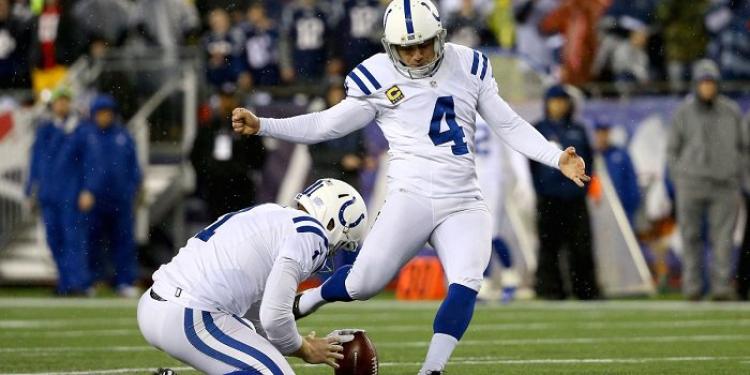The Best Rule Changes in the History of the NFL
Posted: June 1, 2015
Updated: October 6, 2017

As the league introduced the new extra-point rule, we have a look at the most important rule changes in the history of football.
The National Football League recently made a slight rule change affecting the extra kick, which expectedly will provide extra spicing for the games. Until the end of the 2014 season, attempts for an additional point (or two) after scoring a touchdown started from the two-yard line. This starting spot will be moved back to the 15-yard line regarding kicks, and will stay on the two-yard line when the offense attempts a two-point conversion.
Equally important is the fact that the defense will be able to score two points when gaining possession and returning the football during a point-after-touchdown attempt. Though US gambling laws vary from state to state, those who live in a place with legalized internet gambling will get some additional options for in-game betting. This interesting change could make many games more exciting, but might not completely reform the look of the game. Some changes did though in the history of football, and we collected the most important ones.
The biggest change in football history was no doubt the legalization of passing the ball forward in 1906. That decision created the game as we know it; missing out on this would mean a game far less spectacular, pretty much like rugby. The first recorded forward pass came from Massilon’s George Parratt and was caught by Dan Riley on October 27, 1906 in a match against Benwood and Moundsville.
In 1933 it was enabled for the passer to throw a football anywhere around the field, and this lead eventually to the evolution of the quarterback position. Without this, guys like Tom Brady, Peyton Manning, Aaron Rodgers or Ben Roethlisberger would be nowhere near the football field.
For those who bet on sports in the US might be strange, but at the beginning of the 20th century, a field goal was more valuable than a touchdown. Five points were awarded for a successful kick, while taking the ball to the opposition’s end zone meant four points. However, this scheme started to change in the first decade of the last century with reducing the value of the field goal to three points and raising the importance of TDs, awarding six points for them.
Before 1955 the game did not stopped automatically when a runner was taken down by contact. He either had to reach the sideline or the goal-line to stop the play, otherwise he was basically bullied until he lost the ball or became unable to move. After the change was introduced, the play was stopped right after the ball carrier touched the ground with any part of his body except his hands or feet while in the grasp of an opponent. This was a very important modification regarding players’ safety as well.
Before 1978 it was legal for the defenders to jam receivers all around the field. After a rule change was introduced, it became illegal however to hold up the passer’s targets beyond five yards from the line of scrimmage. This modification triggered a football revolution actually, enabling to evolve the amazingly popular and impressive pass oriented game that is known as American football today. Since this change have been introduced, receivers are more about speed than muscle, since they are not engaged in a constant physical fight with defensive backs, making the sport even faster and spectacular.
Before the 1994 season, there was no option after a touchdown was scored: the special teams took the field and the kicker duly hammered the football right between the uprights. There were occasional misses obviously, but it was impossible to single out an eight-point deficit with one drive only. The NFL however embraced an invention coming from a concurrent football league, the USFL, that was in operation between 1982 and 1987, and enabled the offense to remain (or take) on the field after a touchdown was scored, to go for another TD from the two-yard line for two points instead of one.
The latter change enlarged the latitude of coaches and altered the game strategy by prizing the touchdown even higher. The modification coming in effect this year will slightly rearrange things however with some considerable risk appearing by the extra-point attempts, and making the PAT more risky, especially in open-air stadiums where the weather can influence the kick heavily. The mobile betting audience can expect to see more teams going for two, however they have to proceed more cautiously than before, as defenses will fancy to reduce the value of their touchdowns largely.
The National Football League recently made a slight rule change affecting the extra kick, which expectedly will provide extra spicing for the games. Until the end of the 2014 season, attempts for an additional point (or two) after scoring a touchdown started from the two-yard line. This starting spot will be moved back to the 15-yard line regarding kicks, and will stay on the two-yard line when the offense attempts a two-point conversion.
• Extra kick will be riskier
• Going for two is relatively new
• There would be no passing without the changes
Equally important is the fact that the defense will be able to score two points when gaining possession and returning the football during a point-after-touchdown attempt. Though US gambling laws vary from state to state, those who live in a place with legalized internet gambling will get some additional options for in-game betting. This interesting change could make many games more exciting, but might not completely reform the look of the game. Some changes did though in the history of football, and we collected the most important ones.
Forward pass

The biggest change in football history was no doubt the legalization of passing the ball forward in 1906. That decision created the game as we know it; missing out on this would mean a game far less spectacular, pretty much like rugby. The first recorded forward pass came from Massilon’s George Parratt and was caught by Dan Riley on October 27, 1906 in a match against Benwood and Moundsville.
In 1933 it was enabled for the passer to throw a football anywhere around the field, and this lead eventually to the evolution of the quarterback position. Without this, guys like Tom Brady, Peyton Manning, Aaron Rodgers or Ben Roethlisberger would be nowhere near the football field.
Appreciating touchdowns
For those who bet on sports in the US might be strange, but at the beginning of the 20th century, a field goal was more valuable than a touchdown. Five points were awarded for a successful kick, while taking the ball to the opposition’s end zone meant four points. However, this scheme started to change in the first decade of the last century with reducing the value of the field goal to three points and raising the importance of TDs, awarding six points for them.
Dead ball
Before 1955 the game did not stopped automatically when a runner was taken down by contact. He either had to reach the sideline or the goal-line to stop the play, otherwise he was basically bullied until he lost the ball or became unable to move. After the change was introduced, the play was stopped right after the ball carrier touched the ground with any part of his body except his hands or feet while in the grasp of an opponent. This was a very important modification regarding players’ safety as well.
Five-yard contact
Before 1978 it was legal for the defenders to jam receivers all around the field. After a rule change was introduced, it became illegal however to hold up the passer’s targets beyond five yards from the line of scrimmage. This modification triggered a football revolution actually, enabling to evolve the amazingly popular and impressive pass oriented game that is known as American football today. Since this change have been introduced, receivers are more about speed than muscle, since they are not engaged in a constant physical fight with defensive backs, making the sport even faster and spectacular.
Two-point conversion

Before the 1994 season, there was no option after a touchdown was scored: the special teams took the field and the kicker duly hammered the football right between the uprights. There were occasional misses obviously, but it was impossible to single out an eight-point deficit with one drive only. The NFL however embraced an invention coming from a concurrent football league, the USFL, that was in operation between 1982 and 1987, and enabled the offense to remain (or take) on the field after a touchdown was scored, to go for another TD from the two-yard line for two points instead of one.
The latter change enlarged the latitude of coaches and altered the game strategy by prizing the touchdown even higher. The modification coming in effect this year will slightly rearrange things however with some considerable risk appearing by the extra-point attempts, and making the PAT more risky, especially in open-air stadiums where the weather can influence the kick heavily. The mobile betting audience can expect to see more teams going for two, however they have to proceed more cautiously than before, as defenses will fancy to reduce the value of their touchdowns largely.
Related content
Subscribe
0 Comments












